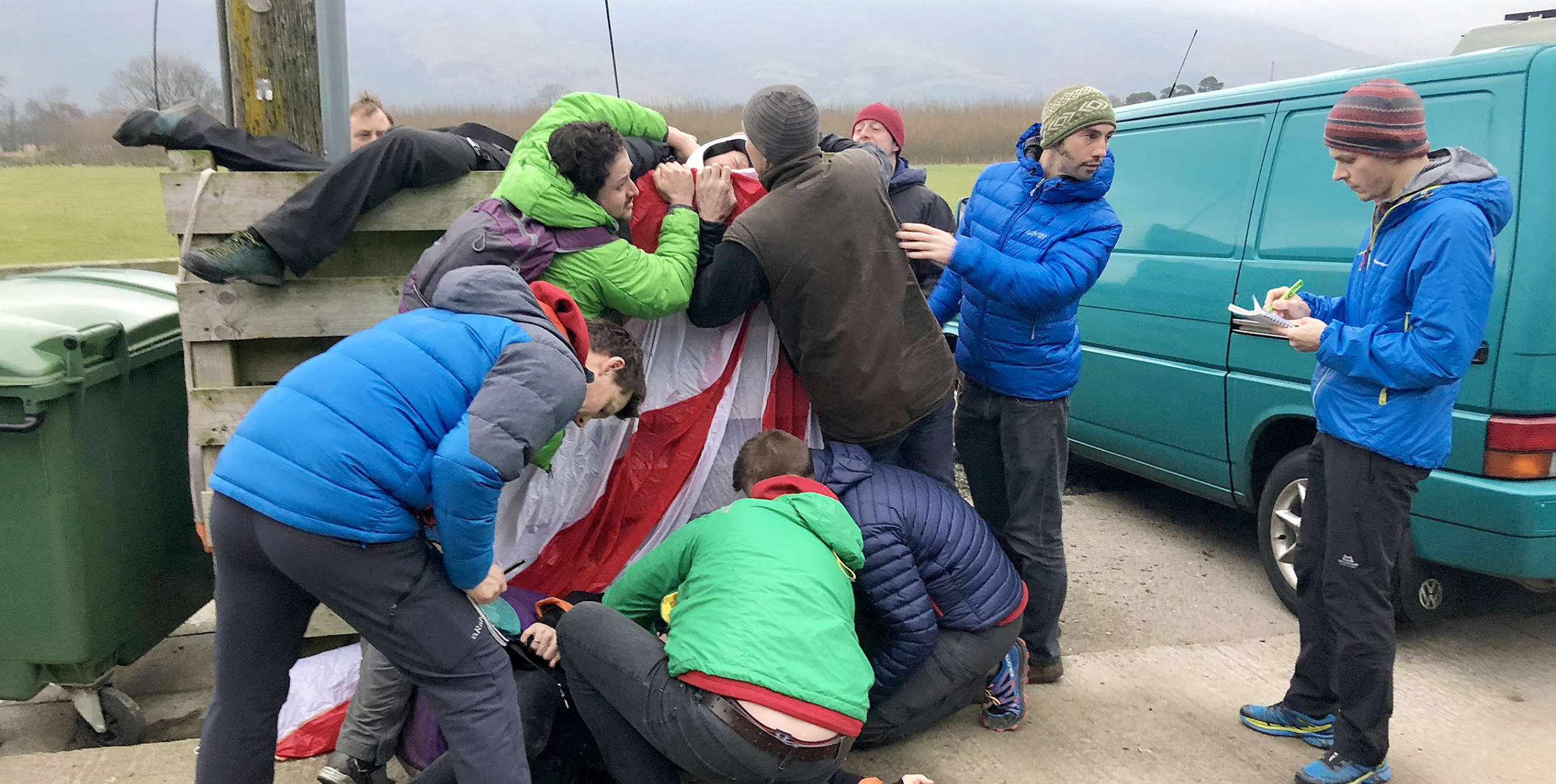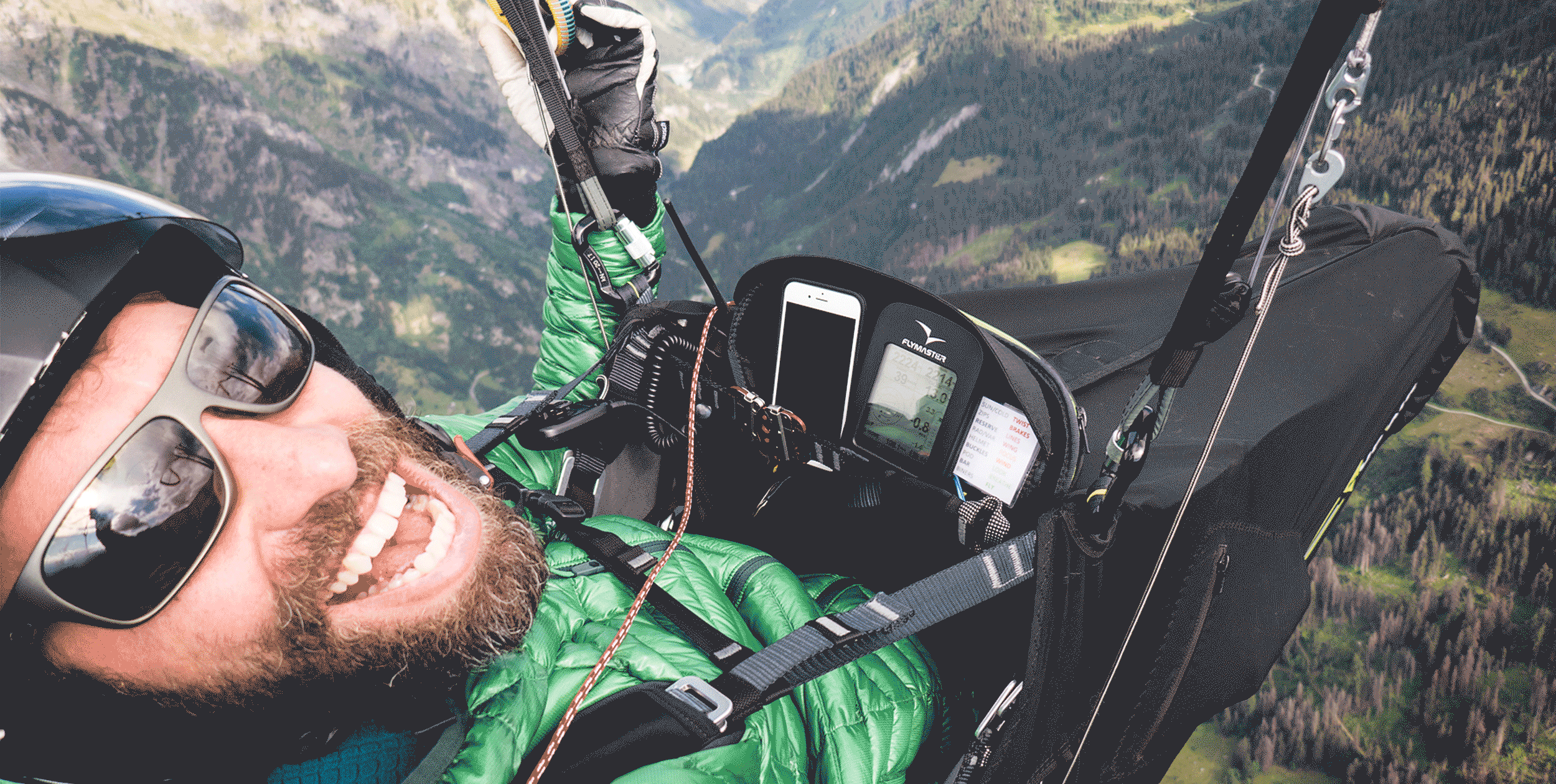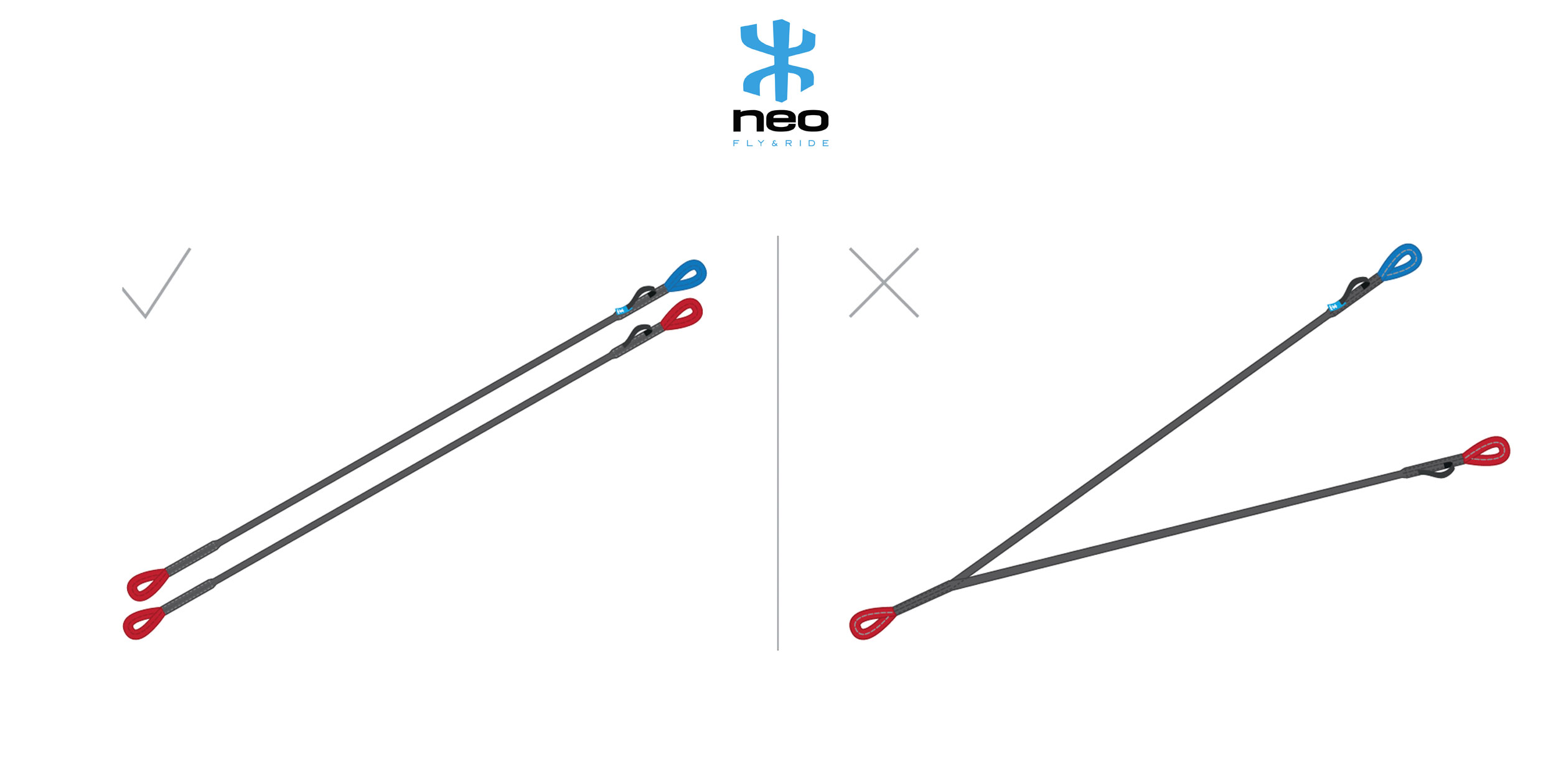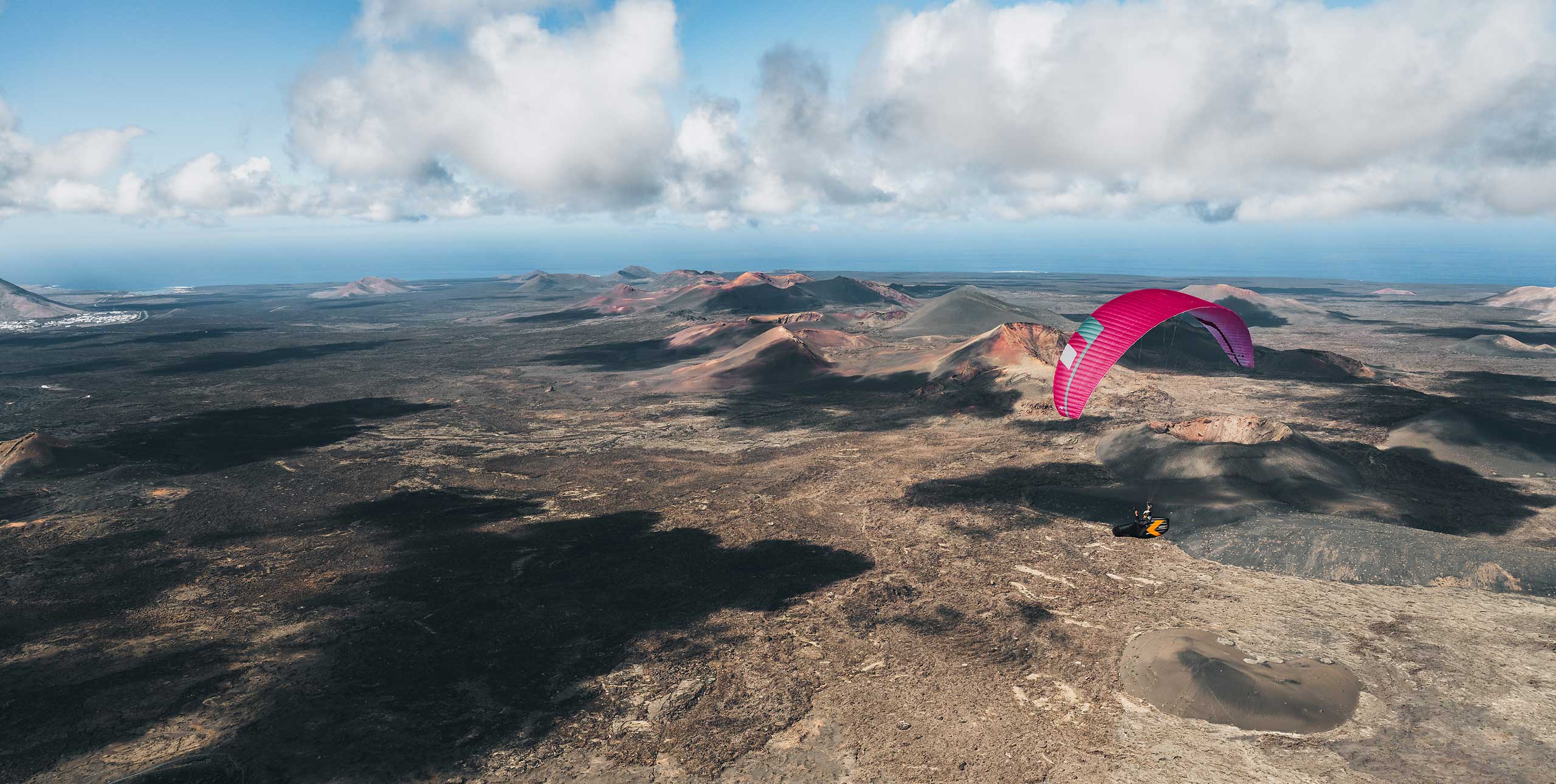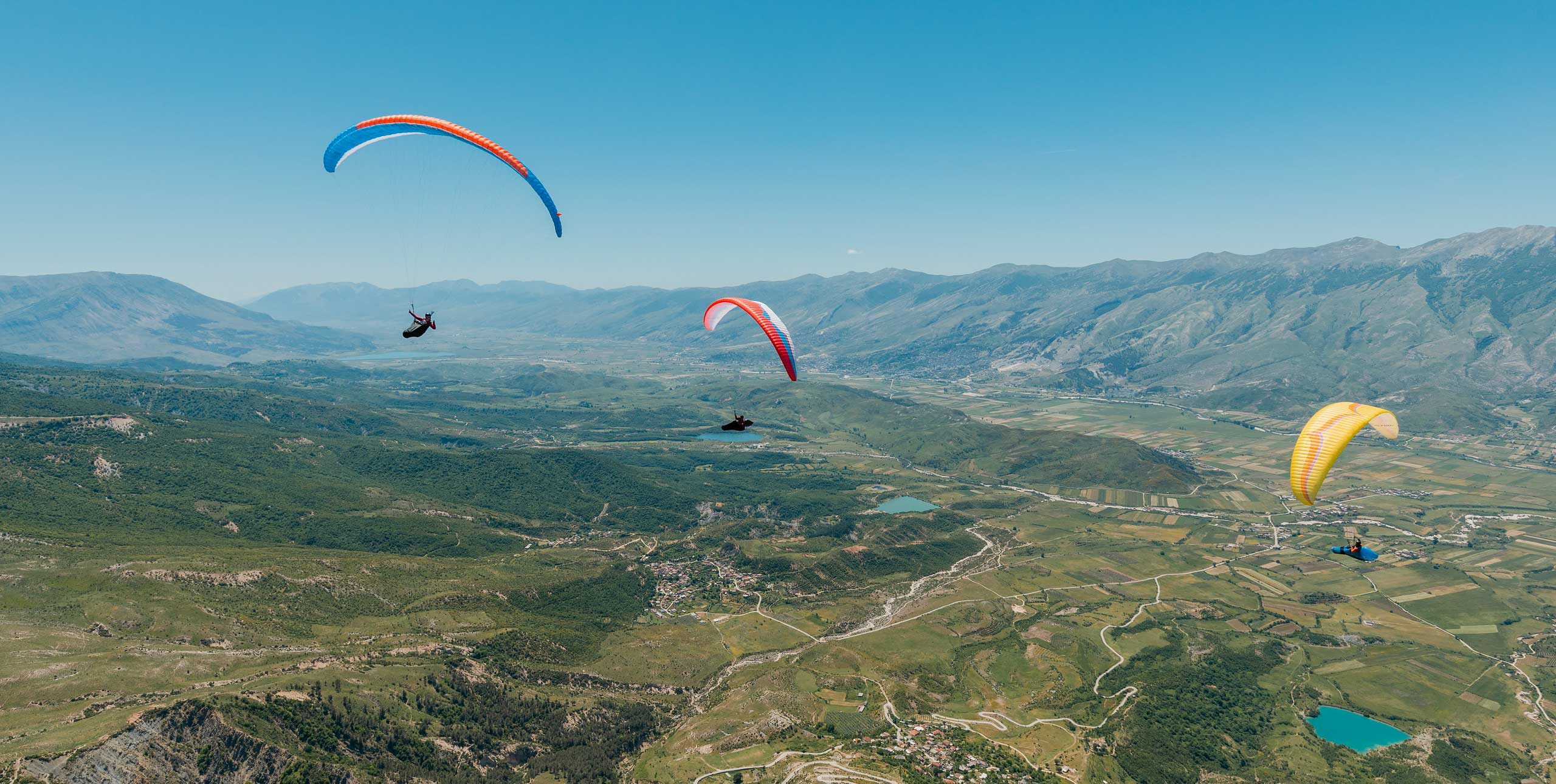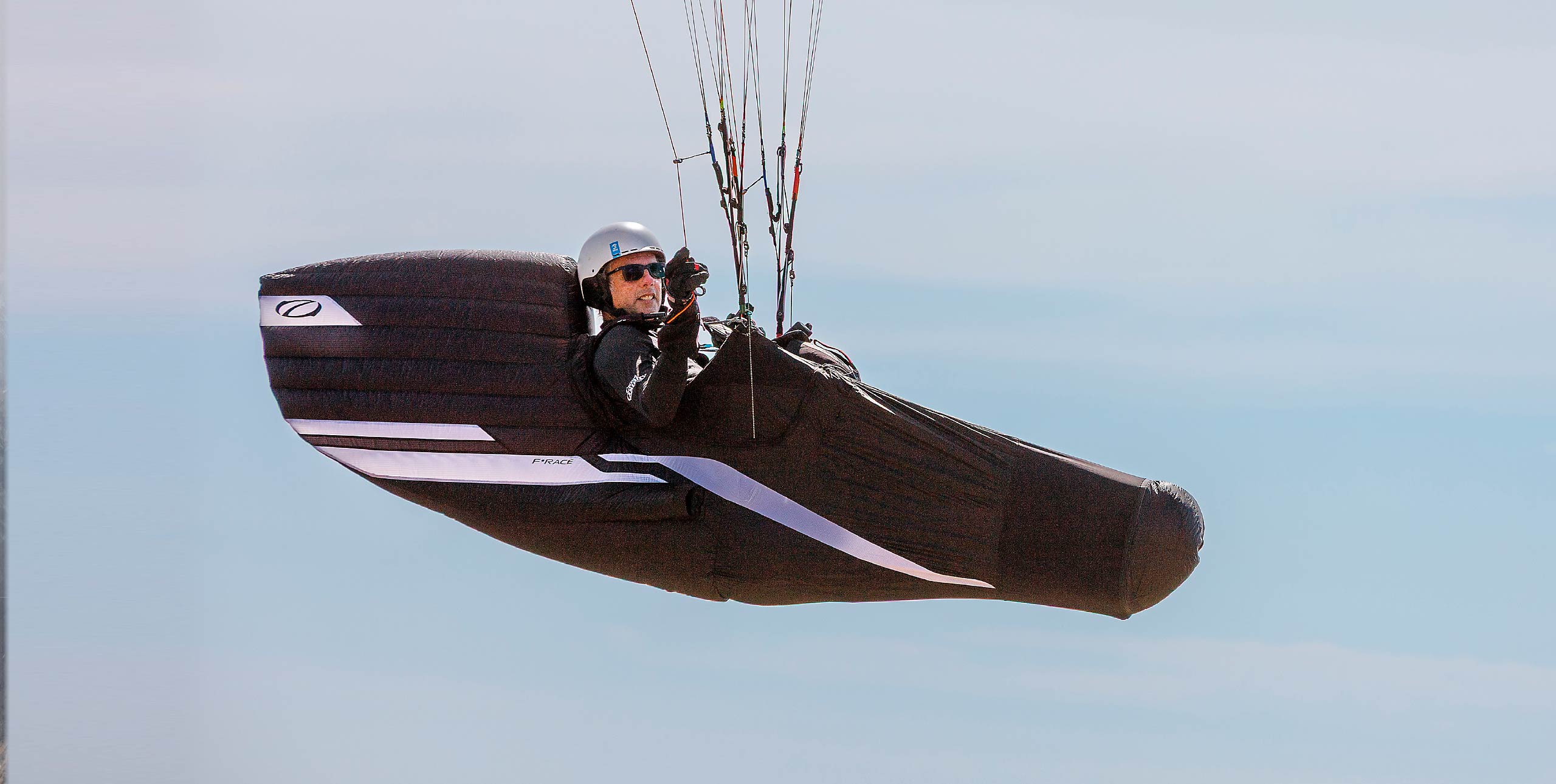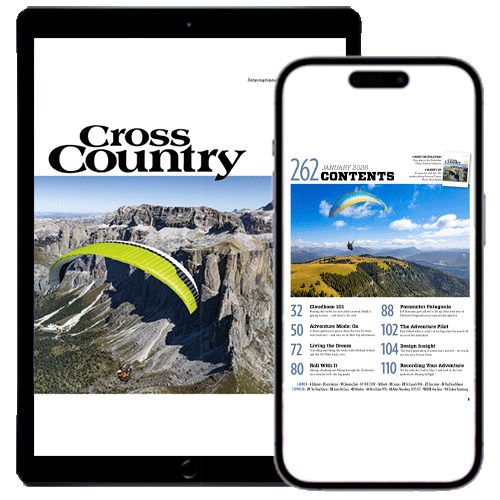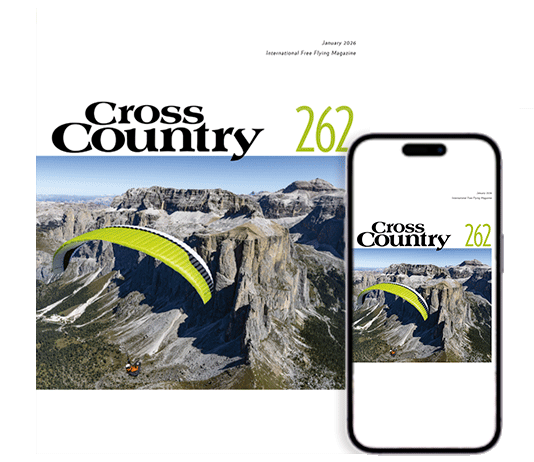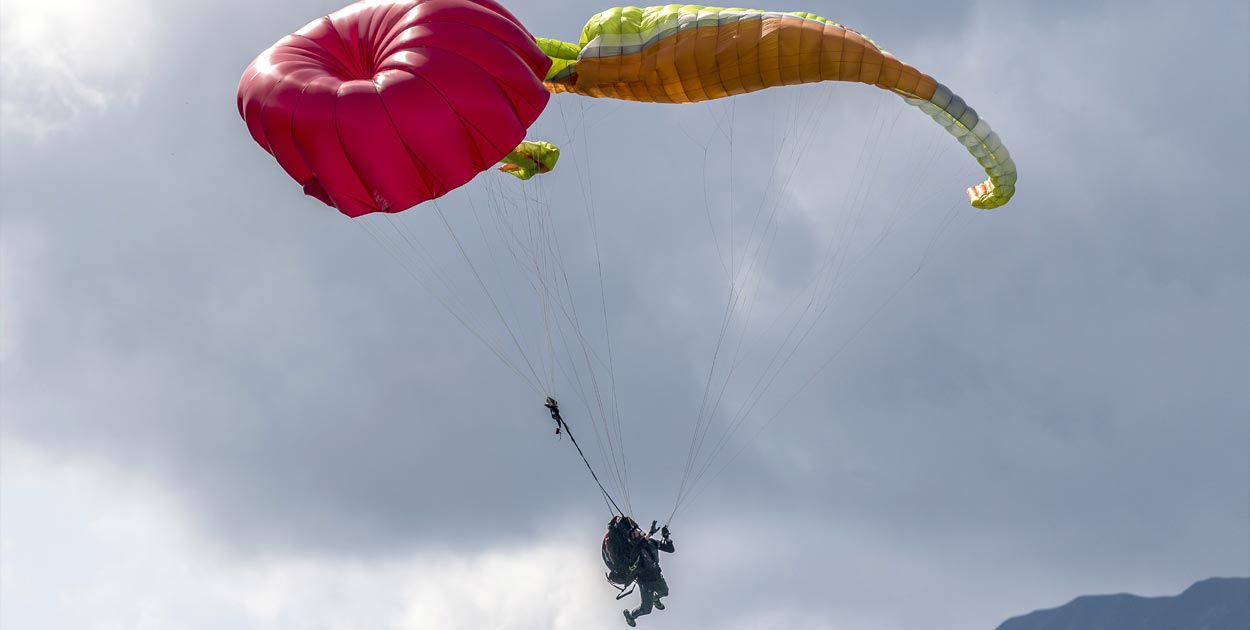
From the boat below, Flyeo’s Malin Lobb calls out “Reserve, reserve, reserve.” I grab the handle, popping the pins, pulling out the container. As I swing my arm forwards, the bag wraps around the riser and hits me square in the face. I burst out laughing, as I awkwardly fling it into clear air. Floating gently down to the lake, I realise that there probably would have been a slicker way to have done that.
Accident investigations often comment on the failure of paraglider pilots to deploy their reserve parachutes in time. In an analysis of incident reports from 2017, the Fédération Française de Vol Libre (FFVL) concluded that in 90% of accidents, the reserve parachute was not deployed. Those accidents led to nine deaths. Clearly, making the decision to throw will always be the critical step.
However, once that decision has been made, the reserve parachute system must work flawlessly and in harmony with our natural reactions under stress. After all, there may be little time, altitude or cognitive reserve left for the pilot to resolve any issues with deployment. Training of reserve parachute deployment is patchy. We are told how to throw in training, we may then practise locating the handle in flight, and some of us may deploy our reserve parachutes on a zipline or during SIV. People also recommend different techniques. Some say we should bring the bag forwards before throwing back, while others advocate a single sweep. We hear that we need to throw the reserve into clear air, towards the inside edge of the wing in a rotation or towards our feet.
Reserve parachutes are rarely deployed, and so often appear to be an afterthought in harness construction. As a result, designs vary. Handles may be front-mounted, on the thigh or on the hip. Some harnesses require the bag to be pulled out in a particular direction. Some come with integrated deployment bags, others do not. While new designs may be trialled by test pilots before commercial release, test pilots are professionals with vastly more experience and currency than the rest of the flying population.
We know from other forms of aviation that some safety system designs will work better than others, given participants’ instinctive responses under stress. Developing standardised reserve parachute systems that work in harmony with ordinary pilots’ natural responses may therefore save deployment time, altitude and ultimately lives. To kickstart this process, we partnered up with the Thames Valley Hang Gliding and Paragliding Club in the UK at their annual Big Fat Repack event, when 55 of their pilots kindly volunteered to be placed under psychological stress then filmed deploying their reserve parachutes from a zipline.
How did the tests work?
Our 55 pilots were an average age of 49 years old, three were female and 52 were male. Half had been flying for three or fewer years and more than half flew less than 25 hours per year. They all began the day at a practice station, to ensure the same baseline level of knowledge. They practised locating their reserve handle and the zipline task. All the pilots were given standard gloves and asked to hold the brake handles in the same open ‘beginner grip’, to avoid confounding the results.
The pilots then climbed one by one up to the zipline platform and were lowered over the side in their own harnesses. We deliberately held them at an awkward angle to heighten anxiety and to induce drop, pitch and yaw when they were released, akin to their wing becoming unstable in flight. They put their hands in dummy brake lines and were asked to look up at two LED lights. When one LED switched on, they had to apply input to the brake line on the corresponding side. At the same time, we asked them to name as many different words as they could beginning with the letter ‘A’. They were then released down the line, without warning, 15-60 seconds later.
The idea was that, at the point of release, the pilots had their hands in the brake lines in their usual flying position, their gaze was directed upwards (as if towards their wing), and they were anxious and under mental strain. When we surveyed the pilots afterwards, 83% stated that they were “completely” or “very” concentrated on the tasks before the zipline released, so we felt confident that we had forced them to make the key cognitive switch from one task (“fixing the wing”) to another (“deploying the reserve”).
Analysing the data?
After three weeks locked in a basement analysing gigabytes of footage, frame by frame, we showed the videos to two groups of experts. The first group was Fabien Blanco, Malin Lobb and the crew at Flyeo, the SIV training centre in Annecy, France, and the second was Dave Thompson (British Hang gliding and Paragliding Association chief technical officer), Bill Morris (BHPA emergency parachutes advisor), Nick Smith (paraglider pilot and flight test engineer at Airbus) and Dr Becky Cranfield (lecturer in Human Factors at Cranfield University).
We grouped the harnesses into four categories for comparison:
1. Sit harness, under-seat reserve (67%)
2. Sit harness, front-mounted reserve (13%)
3. Pod harness, under-seat reserve (18%)
4. Pod harness, front-mounted reserve (2%).
When we compared deployment speeds, we used the elapsed time from brake line release, rather than from the start of zipline descent. This meant that the pilots’ reaction times (the time taken to realise that the descent had begun, and it was time to deploy) would not affect the results.
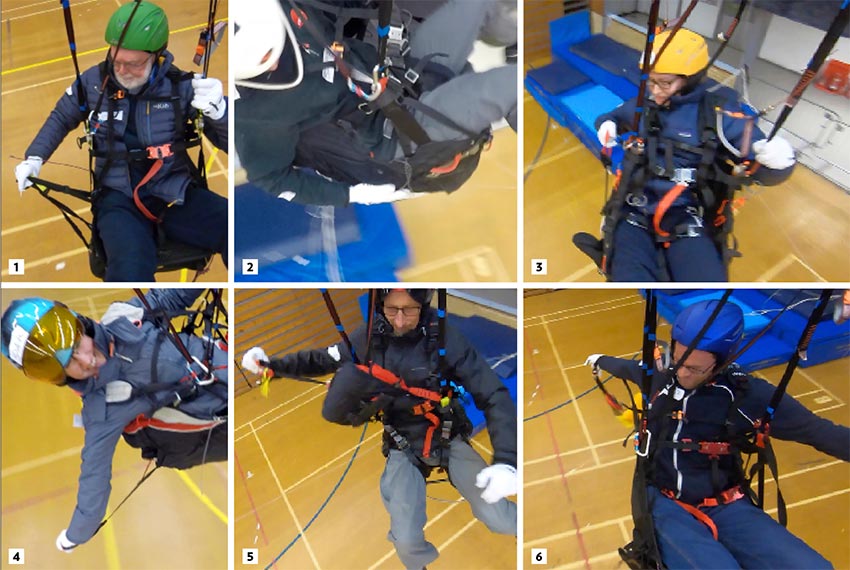
2. Feeling for the hip, not the reserve handle
3. Pulling up, not out
4. A long strop makes deploying difficult for smaller pilots
5. The front-mounted reserve lifts up
6. The bridle has wrapped around the wrist, with potential for arm injury
What did we find?
1. 4% of our pilots might have died if this were a real emergency
While 53 of our 55 pilots were able to deploy their reserve parachutes before the end of the zipline, two (4%) were not. One had an improperly packed parachute, while the other grabbed the stirrup in addition to the reserve handle, preventing him from extracting the deployment bag from the harness. It would have been an easy problem to fix, only requiring him to release the stirrup or grab the bag itself. However, the cognitive overload of the situation meant he was unable to solve the problem in the remaining seven seconds of his zipline run. This neatly illustrated why our safety equipment needs to work perfectly as, when a pilot is under stress, they may not have the mental bandwidth to solve even minor deployment issues.
2. The average time to throw was 1.85 seconds
For successful deployments, the average time from releasing the brake lines, to releasing the deployment bag was 1.85 seconds (range 0.84 – 3.72 seconds). Only eight pilots had front-mounted reserves, not a big enough sample for us to say definitively whether or not they were faster to deploy, though they appeared to be a little quicker. While two seconds may seem pretty fast (and it is), we must remember that the reserve throw is only one part of a much longer “chain of survival”, which also includes making the decision to deploy, getting our hands out of the brakes, the reserve leaving the deployment bag, parachute opening, disabling the main wing and preparing to land under a reserve canopy. Consequently, we need the throw component to be as slick as possible.
3. We don’t look for the reserve handle, we feel for it
When our pilots turned their heads towards their reserve side, they did not appear to be looking for the handle specifically. They only made a concerted effort to look for the handle if they encountered a problem. Their primary focus appeared to be their trajectory down the zipline, and they rarely looked over their shoulder to see if their parachute had successfully deployed.
One of our most striking findings was that 85% of pilots with under-seat reserves instinctively felt for their hip when attempting to locate the reserve handle, no matter where the handle was actually positioned. This meant that 68% missed the handle first time, wasting up to half a second. In contrast, all pilots with front-mounted reserves located the handle on their first attempt. We concluded that under-seat reserve handles should be positioned on pilots’ hips to aid rapid handle location. A standard “anatomical” position would also help pilots when switching between harnesses. Handles should still be brightly coloured, and clear of obstacles, as pilots rely on visual location when touch fails. Equally, adding arrows pointing to the reserve that are visible to pilots when they are looking ahead, or up towards the wing (perhaps on the right-side riser?) might serve as useful reminders to switch tasks from fixing the wing to deploying the reserve before they run out of time.
4. We naturally pull upwards
Some harnesses demand that we pull the deployment bags out in a particular direction, for example laterally away from the harness. However, no matter their harness design, 70% of pilots pulled the handle upwards or upwards-backwards. Even if this caused the bags to stick in the harness, pilots kept pulling up. Some even changed their grip to pull up harder, rather than change direction. Biomechanically this makes sense, as pulling the reserve handle is an urgent action and an upwards bicep curl is a strong, natural movement. All future harnesses must allow the deployment bag to be extracted with a pull in any direction.
5. Smaller pilots should check their strops
The strop connects the handle to the deployment bag. In some cases, the strops were so long that the pilots’ arms were fully extended before the bag came out of the harness. This made it very difficult for them to extract the bag, or to throw it with any purpose once it was out. In contrast, harness-specific deployment bags with integrated, short strops, appeared to work best.
6. Anchor your front-mounted reserve
Front-mounted containers performed very well in our study. However, we noted that if they weren’t anchored at the base, they tended to flip upwards when the handle was pulled, making the reserve harder to deploy and reducing mechanical advantage. This would be a very straightforward issue for manufacturers to correct, simply by adding a loop fastener at the bottom of their front mounted containers. You can also fix your own.
7. Throw in a single, backwards sweep
Those pilots who threw with a single, backwards, sweeping action had significantly faster deployments than those who tried to bring the bag forwards first. Bringing the bag forwards also reduced throwing power and increased the risk of entanglement. In one case, it led to the bridle wrapping around a pilot’s wrist. If his reserve had opened, it would have caused severe upper limb trauma. For those pilots with under-seat reserves and handles on their hips, we would recommend the mantra “hit your hip and sweep away”.
8. Practise, practise, practise
After watching the deployments, the whole study team felt that we needed to increase our reserve deployment practice by an order of magnitude. In skydiving, jumpers run through their deployment movements before boarding the plane, when getting ready to jump and just prior to exiting the aircraft on every jump. We should do the same once we are in the air, perhaps as part of a formal post-take-off check and then multiple times during each flight.
We also felt that most pilots would benefit from a better understanding of their reserve systems in general. We could start in school, with students learning in more detail about reserve fitting, bridle routing, and the importance of periodically loosening Velcro fasteners. Before finishing their course, students could sit in a harness suspended from a hang point and practise throwing multiple times with a dummy reserve to understand the angles and forces required. Ideally, qualified pilots would also do the same after buying a new harness or reserve parachute. We should all throw our reserves from a zipline or, ideally, in flight during an SIV course if we can.
What were the study’s limitations?
As researchers, we are always very conscious of our work’s limitations. In this study, the most important was that, unlike in a real emergency, there was no threat to life. There was also no requirement for altitude awareness or any inhibition to throwing the reserve: in flight, we have to balance trying to fix the wing with the potential hazards of an uncontrolled descent under reserve parachute and our altitude. Whereas, in our study, throwing the reserve immediately was always the right decision.
Though pilots did experience some spatial disorientation and linear acceleration, in many emergencies there will be significant and disorientating rotational forces. These forces will likely make bag extraction more challenging, particularly for the 30% of our pilots who could only reach the handle easily with one hand. However, given that all these limitations made reserve deployment easier in our study than in real life, we feel that they made our findings more urgent rather than less.
What now?
We are a maturing sport, and safety must improve hand in hand with performance. As pilots, we need to be confident that our reserves will work flawlessly at one of the most critical points of our lives. We hope that our study will provide the foundation for the improvement and standardisation of reserve parachute systems. We’d love to see manufacturers and national associations working together to refine our findings and to raise the bar of what we can expect from our equipment.
As you might imagine, our study was a huge team effort. Thank you to Andre Bandarra, Dr Peter Buckle, Dr Clare Eglin, Basia Lesniewska (reserve diagram), Dr John Leach, Geoff Long, Dr Heather Massey, Prof. Chris Sangwin, Nick Smith, Sam Smith, David Thompson, Prof. Mike Tipton, Frazer Wilson; Thames Valley Hang Gliding and Paragliding Club, Flyeo, GoApe, Cross Country Magazine, Cranfield University, University of Portsmouth; the expert focus group members and all the amazing study pilots. The work was supported by Lanarkshire and Lothian Soaring Club and the Royal Aeronautical Society GP Olley Award. To contact the author email matthew.wilkes@port.ac.uk.
This article was published in issue 206 (Dec 2019 / Jan 2020)


